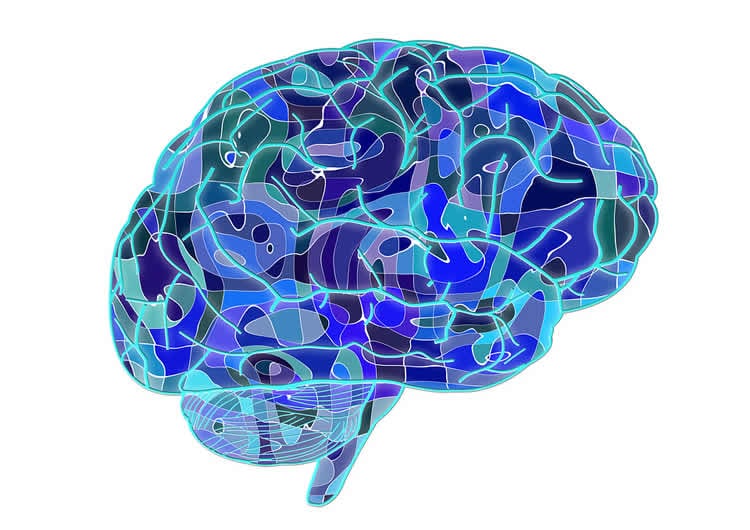Summary: Motivation is as important as sustained attention to a task, a new study reports.
Source: University of Illinois.
American professional golfer Tom Kite said two things about distraction that, together, sum up the findings of a new study on the subject: First, “You can always find a distraction if you’re looking for one.” And second, “Discipline and concentration are a matter of being interested.”
The new research offers evidence that one’s motivation is just as important for sustained attention to a task as is the ease with which the task is done. The research also challenges the hypothesis, proposed by some cognitive neuroscientists, that people become more distractible as they tackle increasingly difficult tasks.
A report of the new study appears in the Journal of Experimental Psychology: General.
“People must almost continuously balance their need for inner focus (reflection, mental effort) with their need for attending to the world,” write the authors of the study, University of Illinois psychology professors Simona Buetti and Alejandro Lleras. “But, when the need for inner focus is high, we may have the impression that we momentarily disengage from the world entirely in order to achieve a heightened degree of mental focus.”
Buetti and Lleras designed several experiments to test whether people are more easily distracted when the mental effort required to complete a task goes up, as is generally assumed in their field.
The researchers first asked participants to solve math problems of varying difficulty while photographs of neutral scenes – for example, cows in a pasture, a portrait of a man, a cup on a table – flashed on a computer display for three seconds, enticing the subjects to look at them. An eye-tracking device measured the frequency, speed and focus of participants’ eyes as they completed the math problems.
The results showed that participants who were engaged in an easy version of the task were more likely to look at the distractors than those engaged in an extremely challenging version. These results run counter to current theories, the researchers said.
“This suggests that focus on complex mental tasks reduces a person’s sensitivity to events in the world that are not related to those tasks,” Buetti said. This finding corresponds to research on a phenomenon called “inattentional blindness,” in which people involved in an engaging task often fail to notice strange and unexpected events.
“Between the inner world of solving a problem and the outer world – what’s going on around you – there seems to be a need to disengage from one when heightened attention to the other is required,” Lleras said.
“Interestingly, when participants completed a mix of easy and hard tasks, the difficulty of the task did not seem to affect their distractibility,” Buetti said. This finding led the researchers to hypothesize that the ability to avoid being distracted is not driven primarily by the difficulty of the task, but is likely the result of an individual’s level of engagement with the endeavor. They call this concept the “engagement theory of distractibility.”
The team did further studies to test this idea, manipulating subjects’ enthusiasm for the task with financial incentives. To the researchers’ surprise, this manipulation had little effect on participants’ distractibility. However, there were large differences between people in terms of their distractibility.

“The more participants struggled with a task, the more they reflexively avoided distraction, irrespective of financial incentive,” Buetti said. “So, the take-home message is: Characteristics of the task itself, like its difficulty, do not alone predict distractibility. Other factors also play a role, like the ease with which we can perform a task, as well as a decision that is internal to each of us: how much we decide to cognitively engage in a task.”
Source: Diana Yates – University of Illinois
Image Source: NeuroscienceNews.com image is in the public domain.
Original Research: Abstract for “Distractibility is a function of engagement, not task difficulty: Evidence from a new oculomotor capture paradigm” by Buetti, Simona; and Lleras, Alejandro in Journal of Experimental Psychology: General. Published online October 2016 doi:10.1037/xge0000213
[cbtabs][cbtab title=”MLA”]University of Illinois. “Distracted Much? Study May Help Explain Why.” NeuroscienceNews. NeuroscienceNews, 5 October 2016.
<https://neurosciencenews.com/distraction-psychology-5216/>.[/cbtab][cbtab title=”APA”]University of Illinois. (2016, October 5). Distracted Much? Study May Help Explain Why. NeuroscienceNews. Retrieved October 5, 2016 from https://neurosciencenews.com/distraction-psychology-5216/[/cbtab][cbtab title=”Chicago”]University of Illinois. “Distracted Much? Study May Help Explain Why.” https://neurosciencenews.com/distraction-psychology-5216/ (accessed October 5, 2016).[/cbtab][/cbtabs]
Abstract
Distractibility is a function of engagement, not task difficulty: Evidence from a new oculomotor capture paradigm
It has been shown that when humans require a brief moment of concentration or mental effort, they tend to avert their gaze away from the attended location (or even blink). Similarly, participants tend to miss unexpected events when they are highly focused on a task. We present an engagement theory of distractibility that is meant to capture the relationship between participants’ engagement in a task and reduction in sensitivity to new sensory events in a broad range of situations. In a series of experiments, we asked participants to perform different cognitive tasks of varying degrees of difficulty while we measured spontaneous oculomotor capture by new images that were completely unrelated to the participants’ task. The images appeared while participants were cognitively engaged in the task. Our results showed that increased cognitive engagement produced decreased sensitivity to visual events. We propose that individual differences in intrinsic motivation play a large role in determining sensitivity to task unrelated events. In addition, our results also indicate that changes in task difficulty on a trial-to-trial basis do not generate trial-by-trial differences in oculomotor capture. Importantly, we believe our framework provides us with a promising way of extending laboratory findings to many real world situations.
“Distractibility is a function of engagement, not task difficulty: Evidence from a new oculomotor capture paradigm” by Buetti, Simona; and Lleras, Alejandro in Journal of Experimental Psychology: General. Published online October 2016 doi:10.1037/xge0000213






